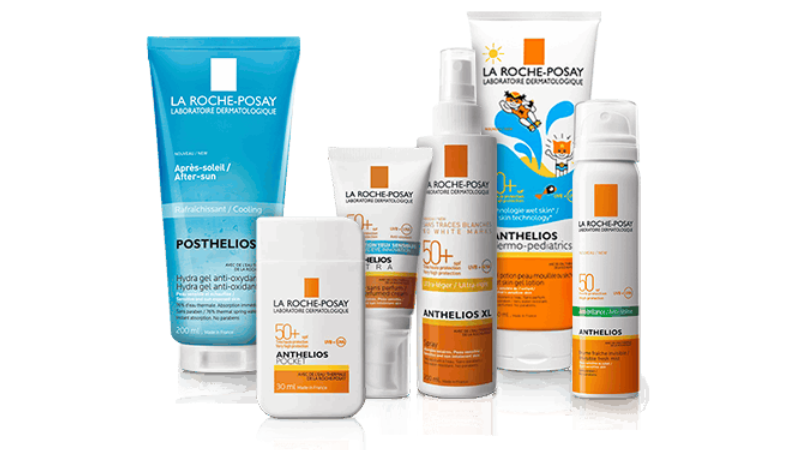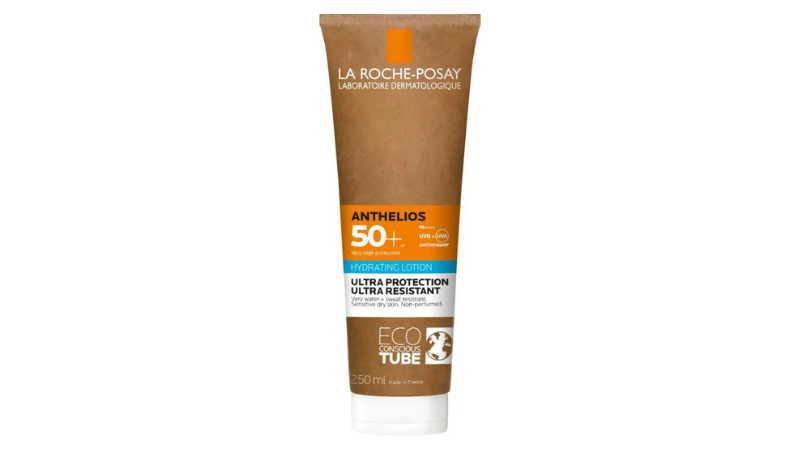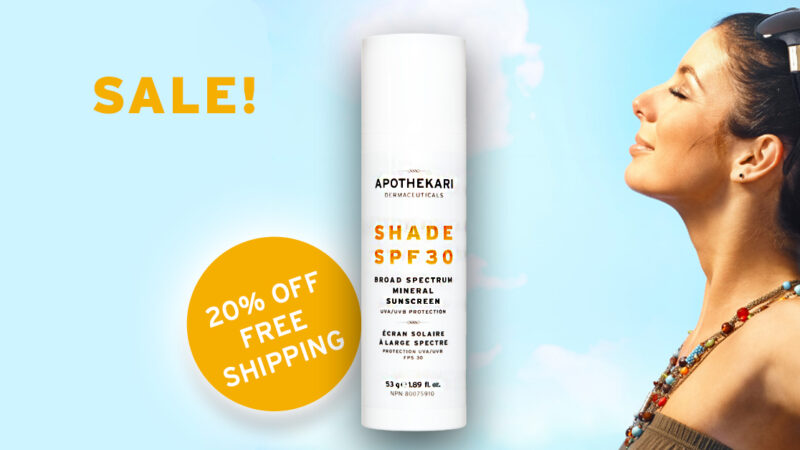Anthelios has been one of our most popular sunscreen brands here at PhaMix. Our customers often discover this line through their dermatologists, and after putting them to the test, they’ve discovered what we’ve known for years: that Anthelios provides exceptional protection.
It’s no wonder that this is a popular sunscreen brand. But what makes it so special?
Hint: it has something to do with an ingredient called Mexoryl. Read on for more.
What is Mexoryl Technology?
We could tell you that we love Anthelios because of the wide selection of sunscreens or the easy-to-wear formulations, and while both are true, neither would matter if Anthelios didn’t provide effective sun protection against UVA and UVB radiation. Thanks to patented Mexoryl technology, Anthelios does just that.
Mexoryl technology incorporates the use of two molecules: Mexoryl SX (Terephthalylidene Dicamphor Sulfonic Acid) and/or Mexoryl XL (Drometrizole Trisiloxane). This combination of ingredients is also well tolerated, hypoallergenic and suitable for sensitive skin. It’s also safe for health and the environment.
What is Mexoryl Technology in Sunscreen?
Mexoryl SX provides excellent protection against damaging UVA rays and also has a non-greasy finish, resulting in sunscreens that have a lovely skin feel. Mexoryl XL delivers protection against both UVB and UVA rays and is particularly suitable for water-resistant formulations.
When these two filters are combined together, their actions are complementary, to provide broad spectrum protection against the UV rays that can cause both burning and aging.
But La Roche Posay doesn’t just stop there. Many Mexoryl sunscreens also contain other effective sun filtering agents such as titanium dioxide, avobenzone, octocrylene or Tinosorb S, for example, resulting in unparalleled broad spectrum UV protection.
Is Mexoryl a Good Sunscreen?
Beyond protecting against the sun’s harmful ultraviolet rays, studies have shown that both Mexoryl SX and Mexoryl XL are safe for human health and are also well tolerated, hypoallergenic and suitable for sensitive skin.
And while they’re safe and effective on human skin, these popular sunscreens have no negative impact on the environment, including coral. Now that’s a good thing!
Does Mexoryl Last All Day?
Along with doing their job at protecting skin from sun damage, Anthelios sunscreens are also highly photostable, meaning they don’t degrade when exposed to sunlight. This ensures that they retain their protective properties. In fact, studies have shown that Anthelios maintains most of its sun filtering capability even 24 hours after initial application.
However, it is still important to apply and reapply sunscreen every two hours or as indicated on the product label. That’s because sunscreens rub off or wash off, especially if you are swimming or exercising vigorously.
How to Apply This Popular Sunscreen
While most of us think of applying sunscreen at the last minute, getting maximum protection out of our favorite product takes a bit of planning (just a tiny bit, we promise!).
- Apply 15-30 Minutes Prior to Sun Exposure: Sun filters like Mexoryl work by absorbing UV rays and releasing them as harmless heat. For maximum efficacy, they need some time to interact with the skin’s surface. However, even if you’ve missed the 15-30 minute window, make no mistake: sunscreens are still going to work to protect you the moment you’ve slapped them on.
- Reapply at Least Every 2 Hours: UV exposure eventually breaks down the stability and effectiveness of sun filters, leaving you exposed to harmful sun rays. And while once-a-day sunscreens would be a dream come true, the truth is that you still need to reapply at least every 2 hours, or immediately if you’ve showered, perspired heavily or have just toweled off after swimming.
- Use More than You Think You Should: Most adults need at least one ounce of sunscreen (a full shot glass) to adequately cover all exposed areas of the body and ½ teaspoon for just the face in order to achieve the Sun Protection Factor (SPF) listed on a bottle of sunscreen. Chances are, the majority of people are using much less.
One trick we like to ensure that we’re using the recommended amount is to apply sunscreen in two phases: apply once, wait a few minutes and then apply a slightly thinner layer on top. And don’t forget all those commonly missed spots like your lips, your ears and the tops of your feet (if you’re wearing uncovered shoes)!
Shop This Popular Sunscreen: What’s in Store
As we head into summer, we’re busy stocking up on our customers’ favorite Anthelios sunscreens. Along with our most popular sunscreen, Anthelios XL SPF 50 Melt-in Cream, and ever-convenient Anthelios SPF 60 Targeted Stick Protection, we’re also carrying cutting-edge products that combine Mexoryl with sought-after Tinosorb S that don’t sacrifice wearability for effectiveness:
- Anthelios UVMune 400 Invisible Fluid SPF 50+: Made with the new, exclusive filter Mexoryl 400, it provides broad-spectrum, very high protection against UV rays. It has an ultra-light fluid texture and bare skin effect with a non-greasy and invisible finish. Formulated for sensitive skin with skin prone to sun intolerance, commonly called sun allergies.
- Anthelios UVMune 400 Hydrating Cream SPF 50+: Also made with the new, exclusive filter Mexoryl 400, it provides very high UVA/UVB facial sun protection in a moisturizing formula for dry to very dry skin.
- Anthelios SPF 50 Dermo Kids Lotion: Specifically designed for children’s sensitive skin and high sun exposure, this non-greasy formula glides easily over skin, leaving a translucent white film to allow even coverage before melting into the skin. Formulated to provide excellent protection against sun’s harmful UVA and UVB rays.
- Anthelios Dermo Pediatrics Spray Invisible SPF 50+: Very high, broad spectrum, photostable UVA/UVB protection for children’s sensitive skin. Ideal for sun-intolerant skin and extreme sunshine intensity.
Need help deciding? Give us a call. We’re always happy to talk sunscreen!




